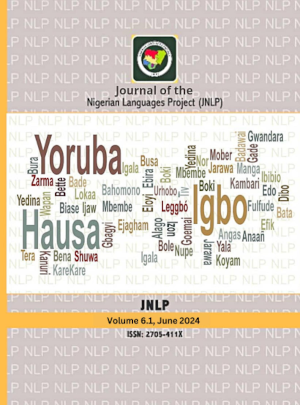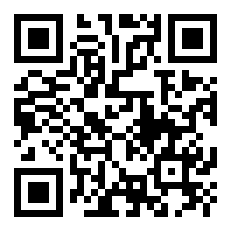Promoting and preserving the Ogbia language through social media
DOI:
https://doi.org/10.60787/jnlp.v6i1.62Keywords:
Ogbia, language, preservation, promotion, social mediaAbstract
This paper is tailored towards the broad concept of language activism through the use of social media. It aims to promote, preserve and document the Ogbia language on social media which has become a viable tool for communication. The Ogbia language by all linguistic standards is endangered, as its present status is far from vigorous use by its speakers. The language, from a linguistic point of view, is poorly described and undocumented. It is not taught in schools, not used in churches and above all it is poorly transmitted to the younger generation. As a means of promoting and preserving the language, the researcher takes advantage of the viability of social media to reach out to speakers of Ogbia on Facebook, by setting up a Facebook page strictly for Ogbia speakers. The target population is speakers between the ages of 18 to 55 years. A major rule of engagement on the page is for speakers to respond strictly in Ogbia as posts are made in Ogbia with English translations. However, young speakers tend to engage the page more in English and sparingly use few words in Ogbia. This is a clear indication of the poor use of the language among speakers from Ogbia and especially those on Facebook. Some of these engagements are presented in this paper as screen shots. The responses on the page have shown that social media is a viable source for promoting, preserving and documenting languages especially those classified as endangered.
References
Adedeji, A. O. 2014. Analysis of the Use of English and Indigenous Languages by the Press in Selected African Countries. Arabian Journal of Business and Management Review (OMAN Chapter), 4(8), 35-45.
Bernard, H.R. 1996. Language preservation and publishing. In J. Fishman (ed.), Contributions to the Sociology of Language. New York: Muton de Gruyter.
Blench, R. 2008. The central delta languages: Comparative wordlist and historical reconstruction. Kay Williamson Educational
Foundation. Cambridge. http://www.rogerblench.info/RBOP.htm
Crystal. D. 2000. Language death. Cambridge: Cambridge University Press. Emeka-Nwobia, N.U. 2015. The place of indigenous Nigerian languages in national development. Research on Humanities and Social Sciences Vol.5, No.12. www.iiste.org
Financial Nigeria. https://www.financialnigeria.com/facebook-records-16-million-active-users-in-nigeria-news-344.html
Fishman, J. 1996. What do you lose when you lose your language. In G. Cantoni (ed.), Stabilizing Indigenous Languages. Northern Arizona University.
Goble, G. 2012. The history of networking. www.digitaltrends.com Harvard Institute of Politics. 2011. https://iop.harvard.edu/youth-poll/19th-edition-spring-2011
Himmelman, N.P. 2006. Language documentation: What is it and what is it good for? In J. Gippert, N.P. Himmelmann and U. Mosel(Eds.). Essentials of language documentation. (pp 1-32). Berlin:Muton De Gruyter
Jibir-Daura, R. 2014. Transformation of Nigeria through indigenous language education, JORIND, 12(1),10-15.
Kamnoestin,T. 2014. Social media use: A critical analysis of Facebook's impact on Collegiate EFL Students' English writing in Thailand. [ PhD dissertation Seton Hall University]. https://scholarship.shu.edu/dissertation/2059
Kari, E.E. 2009. A grammatical description of the Odual language. Research Institute for World Languages, Osaka University.
Kirkness, V.J. 2002. The preservation and use of our languages: Respecting the natural order of our creator. In Indigenous languages across the community. Proceedings of the 7th annual conference on stabilizing indigenous languages. Toronto.
Lawson-Ikuru, M and Icheku, C. 2022. The impact of Nigerian Pidgin on indigenous languages: A case of language shift in Ogbia and Isekiri. Nigerian Languages' Studies. Vol. 6, (pp78-88).
Lawson-Ikuru, M. 2014. A phonology of Ogbia. [Master’s thesis. University of Port Harcourt].
Lawson-Ikuru, M. 2021. A study of tone in Ogbia. [PhD thesis. University of Uyo]
Lawson-Ikuru, M. 2023. The Place of Indigenous Languages in Regional Development. A Workshop Paper Presented at the Centre for Niger Delta Studies and Sustainability, Federal University Otuoke, on the 21st of February, 2024.
National Bureau of Statistics. 2006. National policy on education. 1981. Federal Government Press, Federal Republic of Nigeria.
Olaifa, T. P. 2014. Language preservation and development: The role of the library. Journal of library and information sciences 2(1), 23-28.
Philemon, A. 2020. The role of language in the promotion of culture and national development. Journal of African Studies and Sustainable Development. Vol.3, No.10.
Promoting Indigenous Languages in Nigeria’ published in The Tide Newspaper on 7th February 2019
Sallabank, J. 2010. Language endangerment: Problems and solutions. Communicating change:Representing self and community in a technological world. 50-87. http://www.gla.ac.uk/esharp
Saville-Troike, M. 2002. The ethnography of communication. An introduction. Malden:Blackwell Publishing.
Sumadevi, S. 2023. Impact of Social Media on Youth:Comprehensive Analysis. Shodh Sari. Pp 286-301. Vol.2. DOI:10.59231/SAR17640
Sociolinguistic Survey of Language Diversity and Language Use in Nigeria. 2021. Nigerian Educational Research and Development Council (NERDC). https://www.nerdc.gov.ng/content_manager/ldc_achievements.html
The Ogbia Language. Home [Facebook page] Retrieved June, 2024. https://www.facebook.com/profile.php?
Udoh, I and Anyanwu, O. 2015. Protection and Promotion of Indigenous Nigerian Languages as Utility Vessel of Indigenous Knowledge Systems. In Akwa Journal of Linguistics and Languages. Vol,9
Williamson, K. (1989). Benue – Congo Overview. pp 246- 274. In: J. Bendor Samuel, and Hartell, L. (Editors), The Niger-Congo languages.
University Press America, Lanham, https://www.unesco.org/en/decades/indigenous-languages











